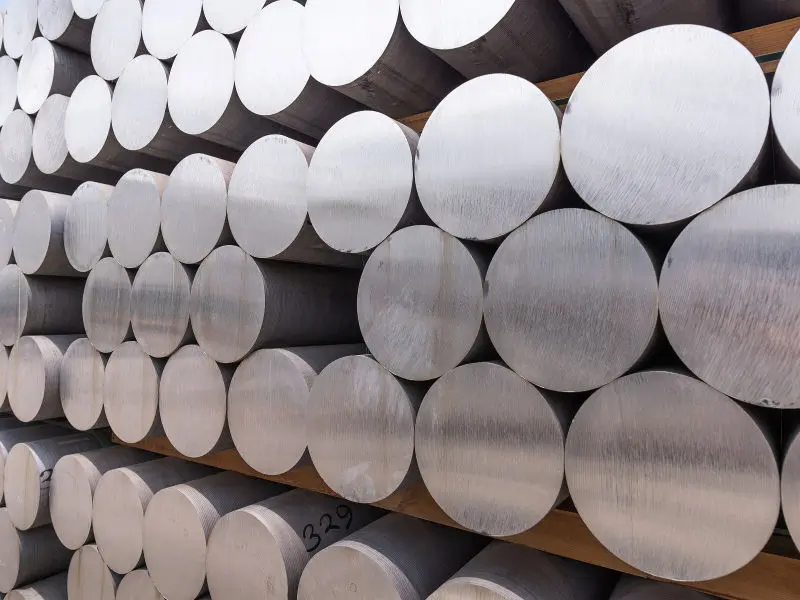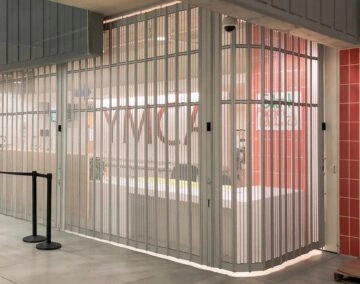LEED Data for Architects

Raw Material Usage (Aluminum)
The following percentages represent the raw material usage in our aluminum products:
- Post-Consumer: 6.6% – dealer scrap bare and painted
- P1020 (Primary): 24.6% – primary aluminum ingots
- Pre-Consumer: 67% – customer extrusion scrap
- Industrial: 0.6% – industrial and off-grade sow
- Internal: 0.8% – scrap generated in-house
- Hardeners: 0.4% – alloying materials

Raw Material Usage (Steel)
The following percentages represent the raw material usage in our steel products:
- Total Recycled Material Content: 24%
- Post-Consumer: 80% of recycled content
- Post-Industrial: 20% of recycled content

Material Sourcing
Our steel and aluminum materials are sourced from within 800km of our manufacturing facilities. This helps reduce transportation emissions and supports local economies.

Percentage of Mass by Material
Below is the breakdown of material percentages by mass for various grille types:
Sliding Grilles
| Grille Type | Aluminum (%) | Steel (%) | Plastic (%) | Glass (%) |
|---|---|---|---|---|
| AS100 Glass Vista Grilles | 47% | 3% | 1% | 47% |
| AS200 Lexan Vista Grilles | 63% | 6% | 31% | 0% |
| AS350 Solid Vista Grilles | 95% | 4% | 1% | 0% |
| AS400 Steel Perf Vista Grille | 80% | 19% | 1% | 0% |
| AS500 Solid Vista Grilles | 95% | 4% | 1% | 0% |
| AS612 Classic 126 Grilles | 80% | 8% | 12% | 0% |
| AS712 Guardian Grilles | 92% | 5% | 3% | 0% |

How The LEED System Works
The LEED (Leadership in Energy & Environmental Design) rating system establishes a uniform standard of measurement by awarding credit points for various building design and construction measures seen as contributing to the energy efficiency and environmental compatibility of a building.
LEED guidelines indicate how points are accumulated for sustainable site development, water savings, energy efficiency, material selection and indoor environmental quality.
Total credits of 26 points or more out of a total possible of 69 points qualifies the building for USGBC certification as a “green” building. Those with more credit points are designated as silver (33-38 points), gold (39-51 points) or platinum (52-69 points).

Recycled Content in Materials
LEED awards points for using materials with recycled content. The goal is to use materials where the sum of post-consumer recycled content plus half of the pre-consumer content is at least 20% of the total material cost.
Types of Recycled Material
- Post-Consumer: Used materials like plastic, paper, glass, and metal.
- Pre-Consumer: Manufacturing waste like sawdust and fly ash.
Calculation
Recycled content value is calculated by dividing the weight of recycled content by the total weight of materials, then multiplying by the total material cost.

Recycled Content in Steel and Aluminum
Our steel and aluminum products are made with a substantial amount of recycled content, including both post-consumer and post-industrial materials. This practice enhances the sustainability of our products.
By using recycled content, we reduce the need for virgin materials and lessen the environmental impact of our manufacturing processes.
![]()
Environmental Impact of Our Products
We are committed to reducing the environmental impact of our products throughout their lifecycle. This includes sourcing materials responsibly, minimizing waste during production, and designing products that are durable and recyclable.
Our efforts to improve the sustainability of our products align with the principles of the LEED rating system and help our customers achieve their green building goals.
At Amstel Manufacturing, sourcing eco-friendly materials is a top priority. We believe that using sustainable materials not only helps protect the environment but also ensures the long-term viability of our products. By choosing materials that are recycled, recyclable, or sustainably sourced, we reduce our carbon footprint and support the global effort to use resources responsibly.
We continuously seek out new and innovative materials that meet our high standards for sustainability and performance. Our commitment to eco-friendly sourcing is reflected in every product we create, from the raw materials we select to the final manufacturing processes we employ.
Contact Us
If you have any questions about our products or how they contribute to LEED certification, please feel free to contact us:
Email: engineering@amstel-doors.com
